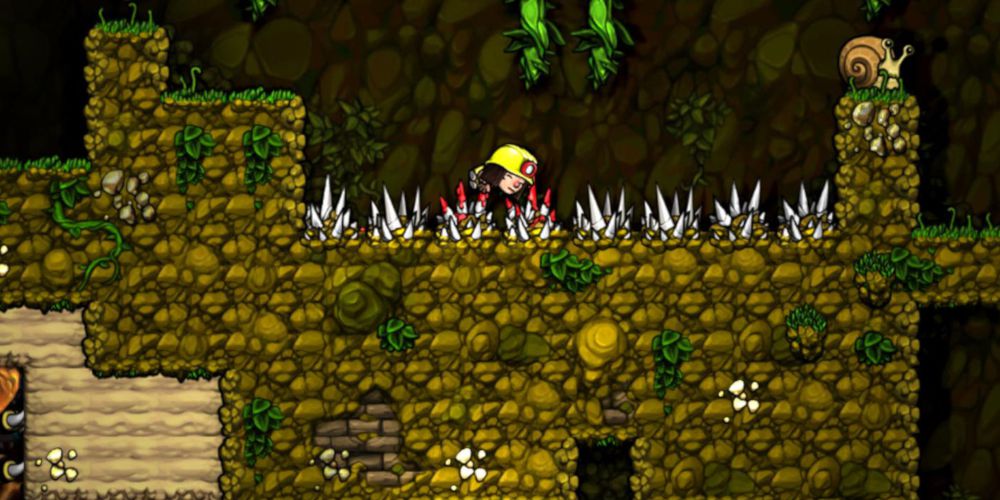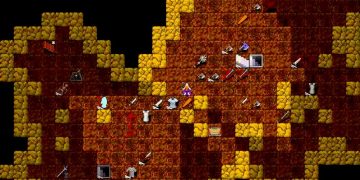What do Spelunky, The Binding of Isaac, FTL: Faster Than Light, and Rogue Legacy have in common?
Well, they've all incorporated roguelike elements as part of their core gameplay loops, and have each stirred up controversy as to what truly constitutes a "roguelike," whether the term "roguelite" is more appropriate, and what exactly is the difference between roguelike, roguelike-like, and roguelite.
Why is this controversial?
Because many developers, especially indie developers who want to see success for their games, label their games as roguelikes in order to capitalize on search trends and marketing hype.
But fans of roguelikes—that is, true roguelikes—have grown tired of hearing, time after time, that a new roguelike has been released only to check it out and realize that it doesn't meet their expectations of what a roguelike ought to be.
This may not seem like a big deal, but the complaint is reasonable. Genre terms exist to prime expectations for players.
Imagine spending $30 on a game marketed as an RTS only to discover that it actually plays more like an ARPG? Or you thought you were buying into a MOBA that turned out to be an FPS with MOBA elements?
It's annoying enough when you want to discover new electroswing artists and all you get is tropical house—there's no reason why this phenomenon needs to bleed into video games!
So if you've ever wondered what exactly the differences are between roguelikes, roguelike-likes, and roguelites, then here's a quick explainer.
What Is a Roguelike?
The term "roguelike" came about as a way to describe games that played similarly to Rogue, an ASCII dungeon crawler released way back in 1980.
Inspired by text-based games from the 1970s, Rogue was notable for its use of permadeath, procedural generation, and ASCII characters to represent in-world entities (as opposed to full-on text sentences a la Zork) to ensure a different adventure experience with each playthrough.
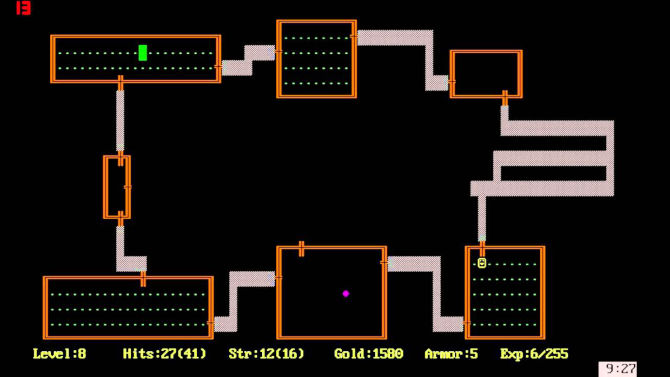
But there are different interpretations as to what a roguelike entails, and even to this day there are debates as to which elements are essential for a game to be considered "like Rogue."
The most widely accepted definition is the Berlin Interpretation, which is the definition that was settled on by at the 2008 International Roguelike Development Conference.
According to the Berlin Interpretation, a roguelike must have:
- Permadeath
- Random environment generation
- Exploration and discovery
- Turn-based, grid-based, non-modal gameplay
- Hack-n-slash (e.g. lots of monsters to kill)
- Resource management (e.g. inventory)
Some enthusiasts also impose a few extra requirements, such as ASCII graphics, level-based dungeons, top-down RPG gameplay, only one player character to control, and hard numbers for attributes like health and damage.
However, according to the Berlin Interpretation, these are "low-value factors" that don't disqualify a game from being a roguelike if they're missing.
The games that were analyzed to arrive at this definition are Rogue, Nethack, ADOM, Angband, and Crawl.
What Is a Roguelike-Like?
The release of Spelunky in 2008 put the Berlin Interpretation, and other roguelike interpretations with it, to the test.
Here we had an indie game that played a lot like classic roguelikes: levels were randomly generated and required exploration, there was resource management on the part of the player, there were plenty of monsters to defeat, and the player had to start over from scratch upon death.
The only thing missing was turn-based, grid-based gameplay—Spelunky was a sidescrolling platformer.
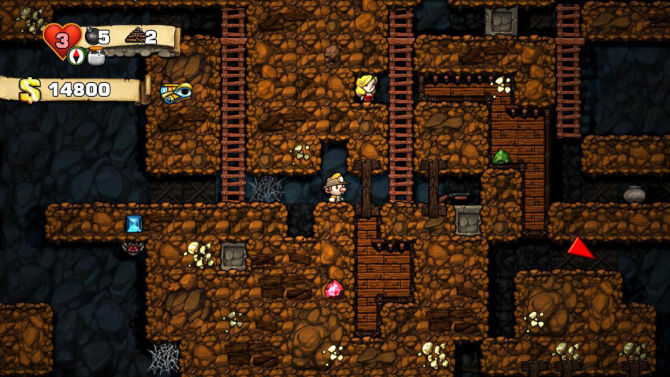
Despite the borrowing of so many elements, Spelunky certainly lacked the spirit of a roguelike, leading to the birth of a new term: the roguelike-like, or a game that applies one or more roguelike elements to a different genre.
In the case of Spelunky, it was the "roguelikification" of a sidescrolling platformer. In 2012, the release of FTL: Faster Than Light showed what it would be like to introduce roguelike elements to RTS gameplay—and the result was a smash hit.
But the most puzzling roguelike-like was 2011's The Binding of Isaac, which fulfilled even more of the Berlin Interpretation and arguably felt the most like a roguelike but was rejected by roguelike enthusiasts as decidedly not a roguelike.
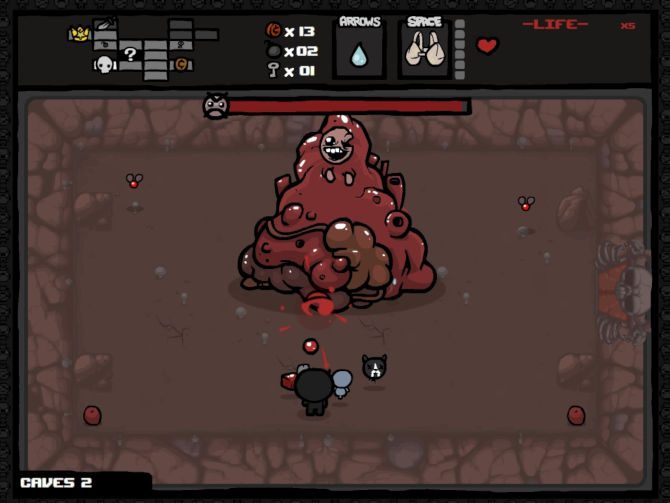
The Binding of Isaac had pretty much everything: top-down view a la The Legend of Zelda, procedurally generated levels, dungeon-based exploration, a tile-based environment, item collection and inventory management, plenty of monsters to hack-n-slash through, and permadeath.
So what was the problem?
Well, The Binding of Isaac was a twin-stick shooter, and it was this aspect that didn't sit well with roguelike fans. Combat in classic roguelikes was turn-based and tactical, and The Binding of Isaac was, at its core, an action-packed shooting game.
Since then, there have been dozens of successful roguelike-likes, including Darkest Dungeon, Nuclear Throne, and Enter the Gungeon.
What Is a Roguelite?
In 2013, Cellar Door Games released Rogue Legacy and intentionally avoided calling it a roguelike or even a roguelike-like, instead opting to forge a new term: the roguelite.
Much in the same vein as roguelike-likes, Rogue Legacy borrowed roguelike elements and applied them to its sidescrolling platformer gameplay, but introduced a new element that offset the permadeath mechanic that roguelikes and roguelike-likes were so famous for: carry-over progression.
While the current character truly dies upon death, the player continues on in the role of a descendant who retains the same equipment, upgrades, and stats that were unlocked by ancestors (the player's previous runs), but with different characteristics and abilities. The castle, which is the game's main dungeon, remains persistent across deaths.
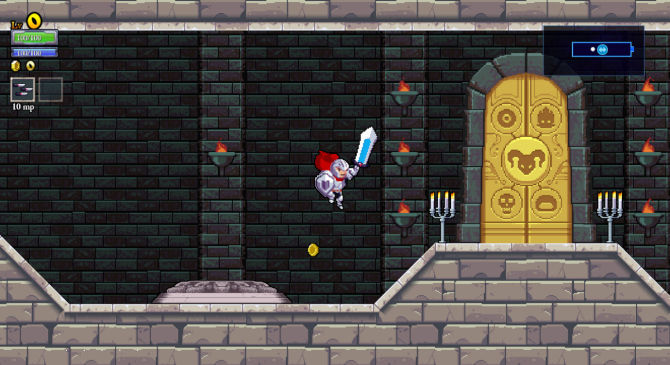
Just as there's disunity over the definition of roguelike, not everyone agrees on what it means to be a roguelite.
For some, the terms roguelike-like and roguelite are synonymous. For others, myself included, roguelites are defined by the one feature that truly makes them "lite" (or more palatable to players at large) compared to roguelike-likes, and that's the carry-over of progress across playthroughs, also known as meta-progression.
Whereas one of the main draws of roguelikes and roguelike-likes is permadeath—the complete and utter loss of everything upon death—it's a bit too harsh for most gamers to stomach, which is why roguelites have boomed in popularity.
The threat of death is still there in the form of having to start over, but each loss still contributes to forward momentum. No run is ever wasted. This is the defining trait of roguelites that differentiates them from their less forgiving siblings.
Note that unlocking content isn't necessarily the same as carry-over progress. For example, Nuclear Throne has characters that can be unlocked through gameplay, but each character starts each new game as a blank slate.
The persistence in roguelites necessitates that you can start off from where you died, at least in terms of overall game state, on your subsequent runs.
Roguelike vs. Roguelite: Does It Really Matter?
For roguelike purists who prefer the hardcore, traditional gameplay that's core to real roguelikes, the terms do matter.
Because if they're looking for new roguelikes to play and stumble across a new game that claims to be a "roguelike" but is truly more of a "roguelite"... well, that can be pretty disappointing.
But for everyone else, the distinction doesn't seem to matter much at all. Any game with procedural generation and harsh penalties upon death tends to get labelled as a "roguelike" these days—and this trend seems to be entrenched more and more with every passing year.
So while there are technical differences between the terms "roguelike" and "roguelite," we might just have to throw in the towel and accept that the original definition of a "roguelike" no longer holds.
